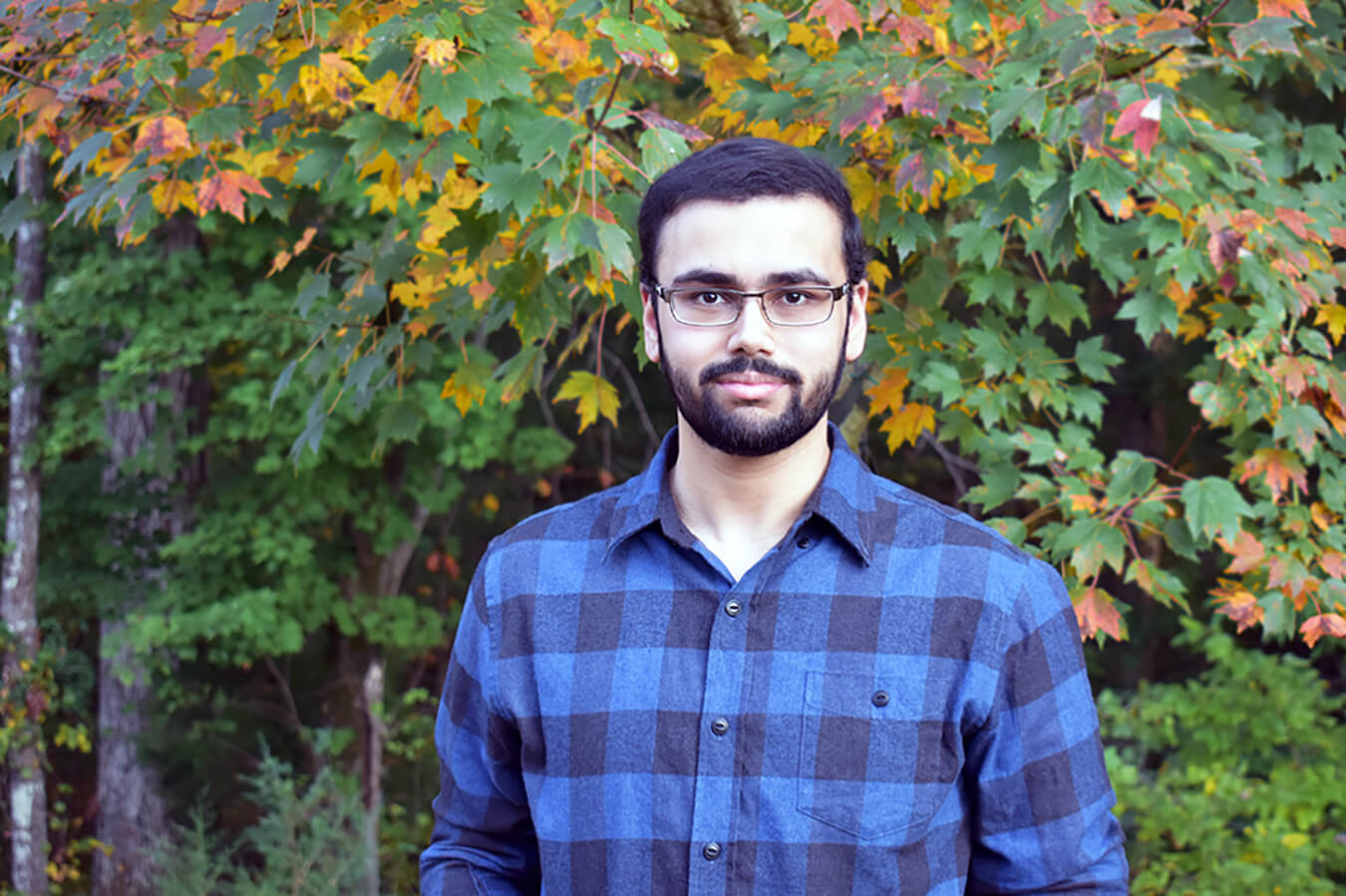
Research Spotlight: Computer Science Meets Neuroscience
October 22, 2020
Q: What kind of research opportunities have you found at Carolina?
A: I’m currently working in Dr. Michael Hallquist’s DEPENd Lab in the Department of Psychology and Neuroscience, which studies adolescents with certain neurological pathologies like Borderline Personality Disorder and Bipolar Disorder. It’s well-known that teenagers make impulsive decisions; we’re looking at functional MRIs and trying to determine if subjects with a neurological pathology demonstrate chemical changes or other brain activity that promotes more or less impulsive behavior versus typical teen behavior. One of my roles is to analyze the imaging data that is produced by the functional MRI’s. It can be cluttered, so we want to make sure that we can procure the data, arrange it, and have it be compiled in a form that can be analyzed. I recently added a neuroscience minor, because I think it has a lot of really relevant applications to my computer science interests: neural networks, deep learning, and artificial intelligence.
Q: Speaking of computer science interests, what research topics excite you in that field?
A: I’m really interested in machine learning and deep learning. I’m starting to work with Dr. Brent Munsell in the Department of Computer Science, who does a lot of work in neuroscience and brain mapping. He’s interested in predicting cognitive abilities and other future brain conditions based on current brain scans. The research includes taking a scan of your brain when you’re young and using it to predict what potential ailments you may have in the future. So, if I take a scan of your brain when you’re eight or nine years old, this research should help me identify if you’ll have Alzheimer’s when you’re older. Will you potentially carry more risk for post-surgery seizures? Can I predict your cognitive abilities based on the white matter tissue connections that are in your brain?
We’re also interested in the research being done on the relationship between functional MRIs, which measure brain activity, and structural MRIs, which simply show the brain’s anatomy and structure. We know there is some relationship between the structure of the brain and how it functions, but nobody really understands exactly what that relationship is. We are trying to teach a machine to turn a structural MRI into a functional one. If it works, we can analyze what processes the machine used in order to make the transformation and learn about the connection between the structural and the functional components of the brain. I’ll continue exploring this area next spring through COMP 495, an independent study research class with Dr. Munsell, and potentially throughout the rest of my time at Carolina.
Q: Can you tell us a little bit about your summer internship?
A: This past summer, I interned at Allscripts, a healthcare IT company. My main focus was cybersecurity, verifying the safety of applications across the Allscripts brand to ensure that patient healthcare information is secure. The company also hosted a Shark Tank-style competition, with multiple different intern teams each working to design a product to solve the fragmentation in the healthcare industry. My team discussed some options and settled on an idea to increase price transparency in healthcare, because we felt like that was one of the biggest issues facing the nation today: people don’t know where, or when or how they can receive affordable healthcare. We wanted to see if we could make that process easier.
Q: How did that project turn out?
A: Well, we won first place in the competition, but an even better outcome was that we started to have meetings with the Allscripts Chief Innovation Officer (CIO), and a couple of us were invited to continue working with the company. The CIO helped us flesh out the idea of a mobile application to increase the price transparency of healthcare and pitch it to other executives. We’re working really hard to make it really user-friendly to make sure it’s equitable and accessible.
Q: Has it been difficult to balance that project work with your classes and other research work?
A: It’s been a lot of work, but the CIO lives in Australia and the time difference is really beneficial. There are a lot of meetings at 8 p.m. or 9 p.m., which works really well because I have class during the day. It’s also kind of a blessing that this semester is ending a little bit early, as after finals I’ll be able to devote more time towards the project. Juggling my schoolwork, research interests, and my internship has been difficult, but I’ve been able to manage my time and make the most of the situation we are in.
Q: What’s the outlook for this mobile application?
A: It has a lot of support around the company. I think Allscripts really wants to make healthcare more transparent, and within the U.S. government there is bipartisan support for more transparency as well. We are currently working on procuring a patent to secure the intellectual property surrounding the application. There is large support within the company for innovation, and we are all excited to see where this goes.
